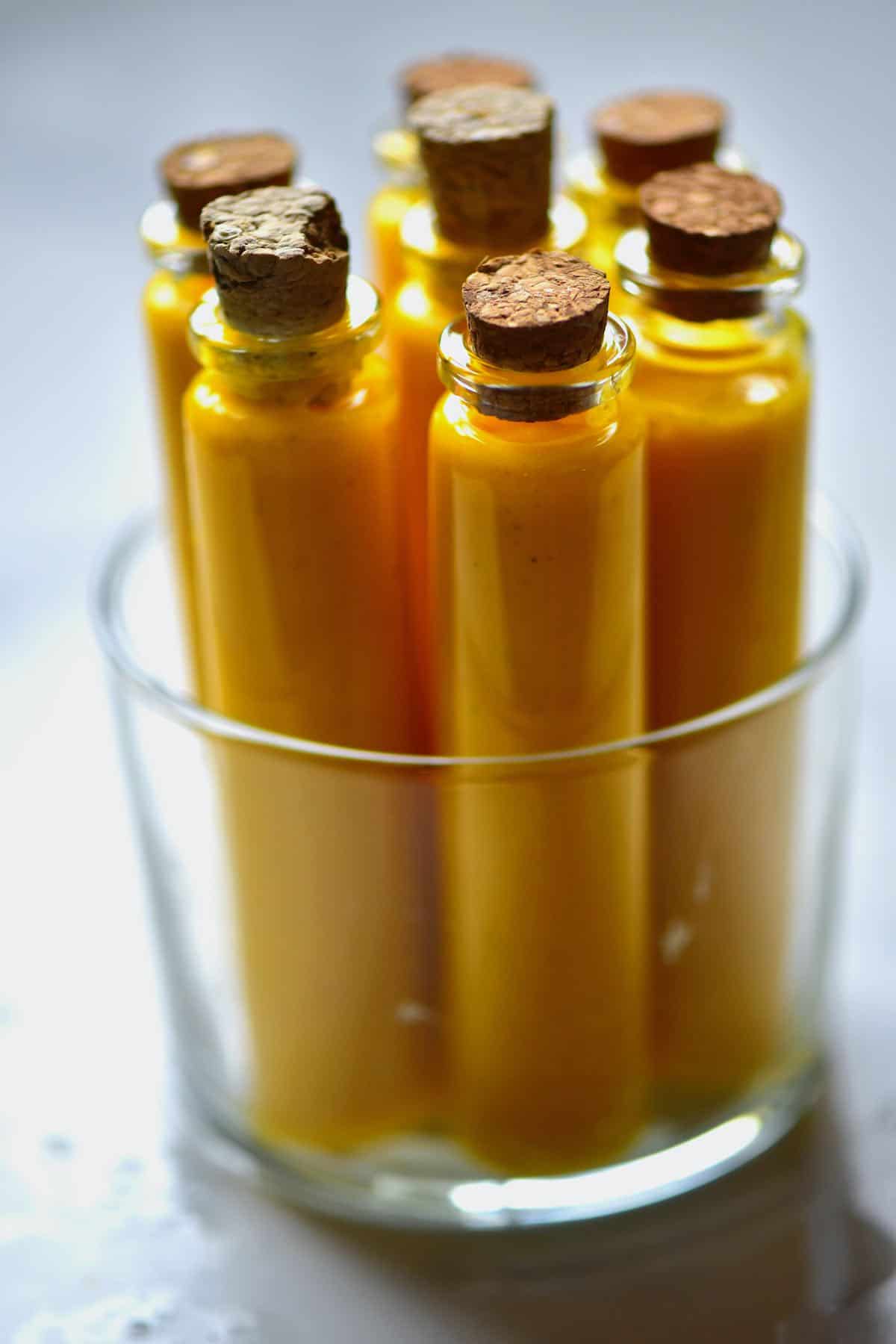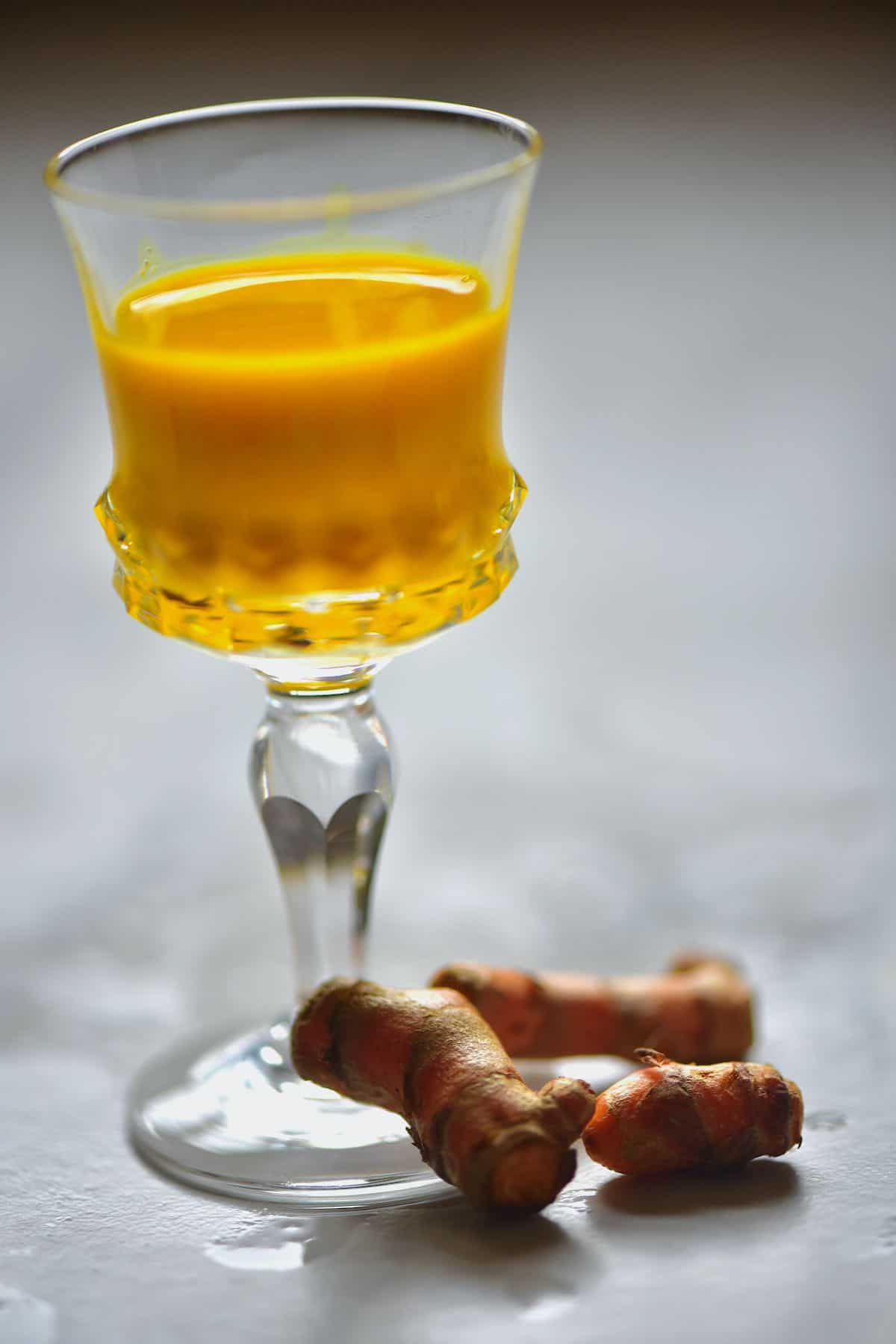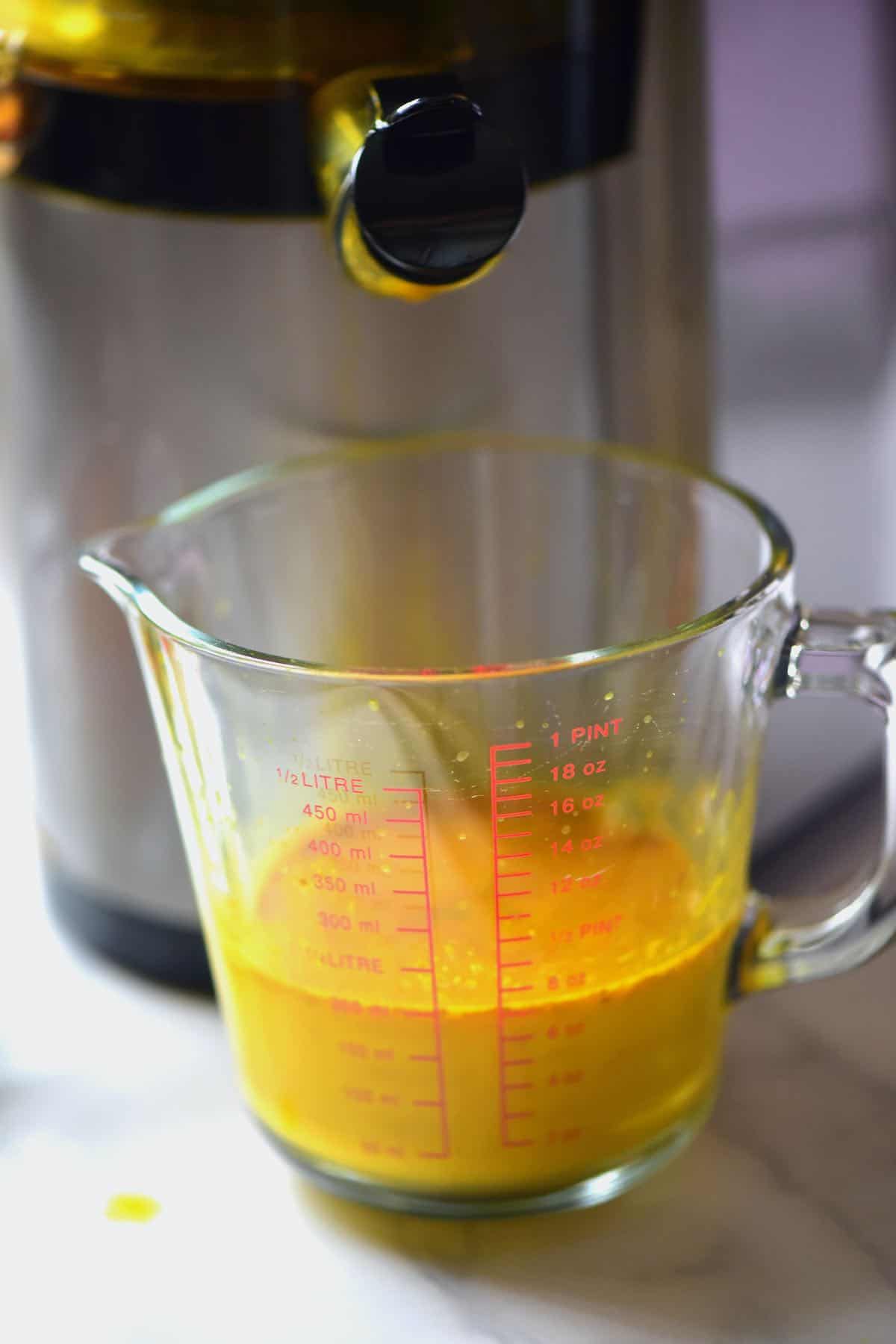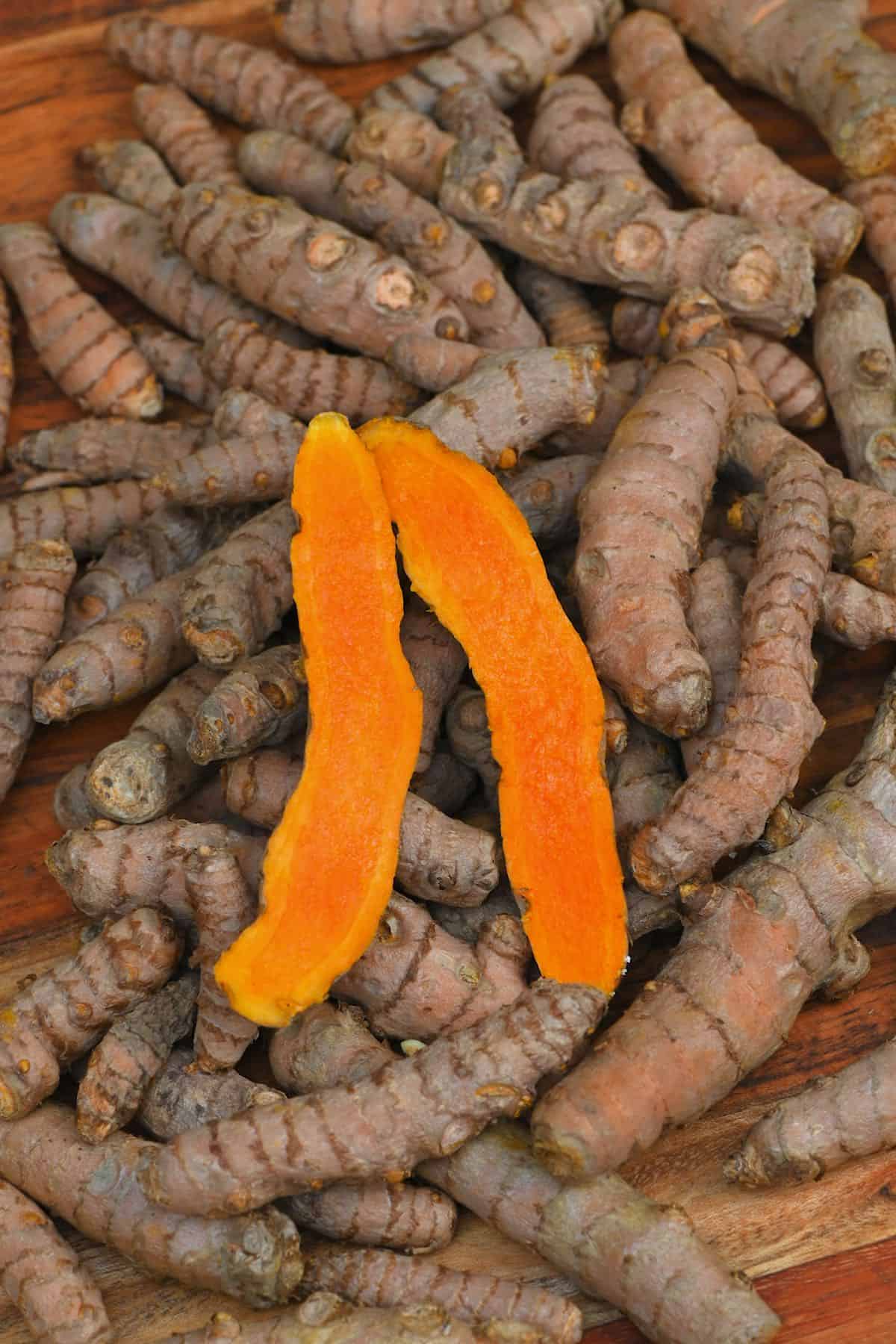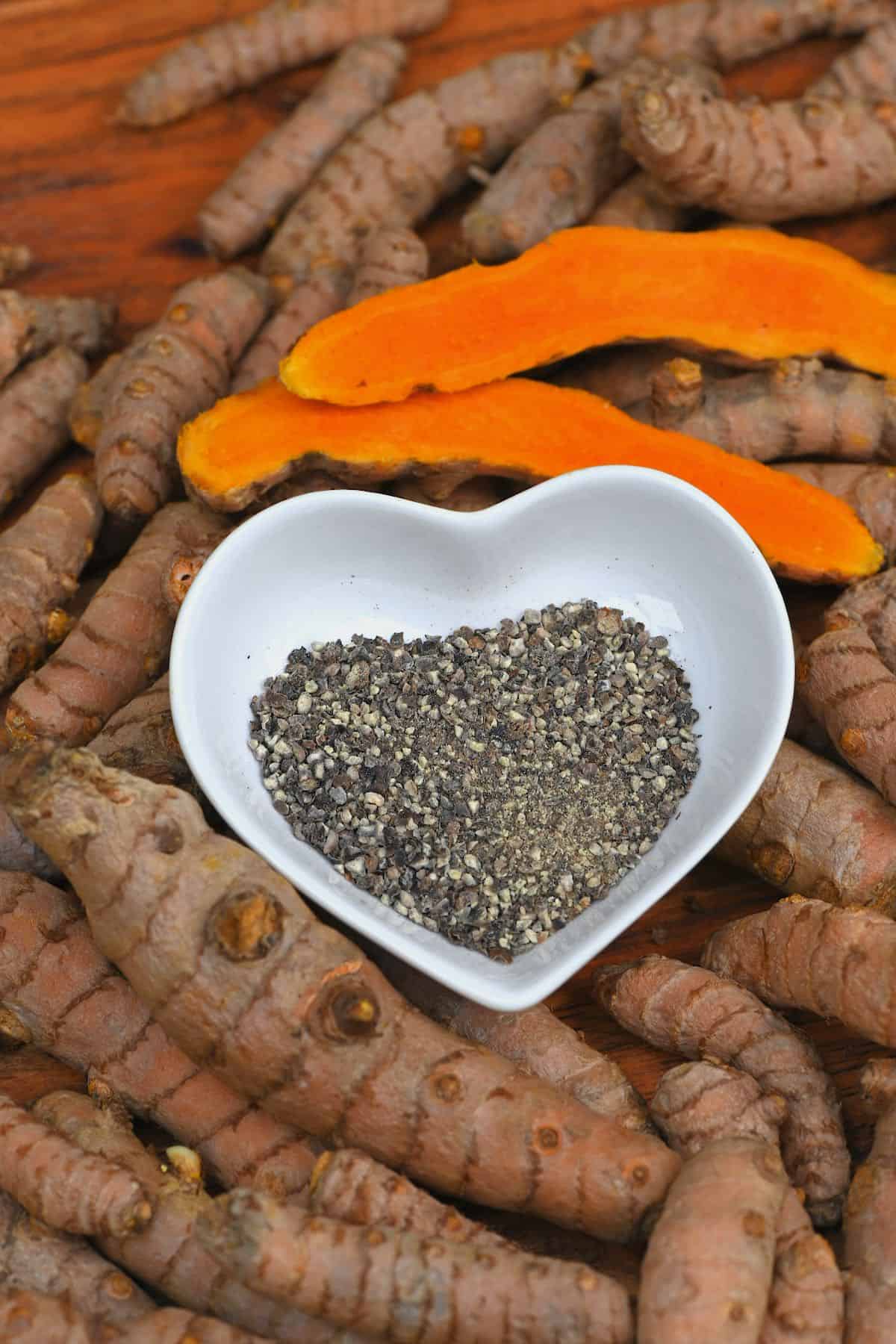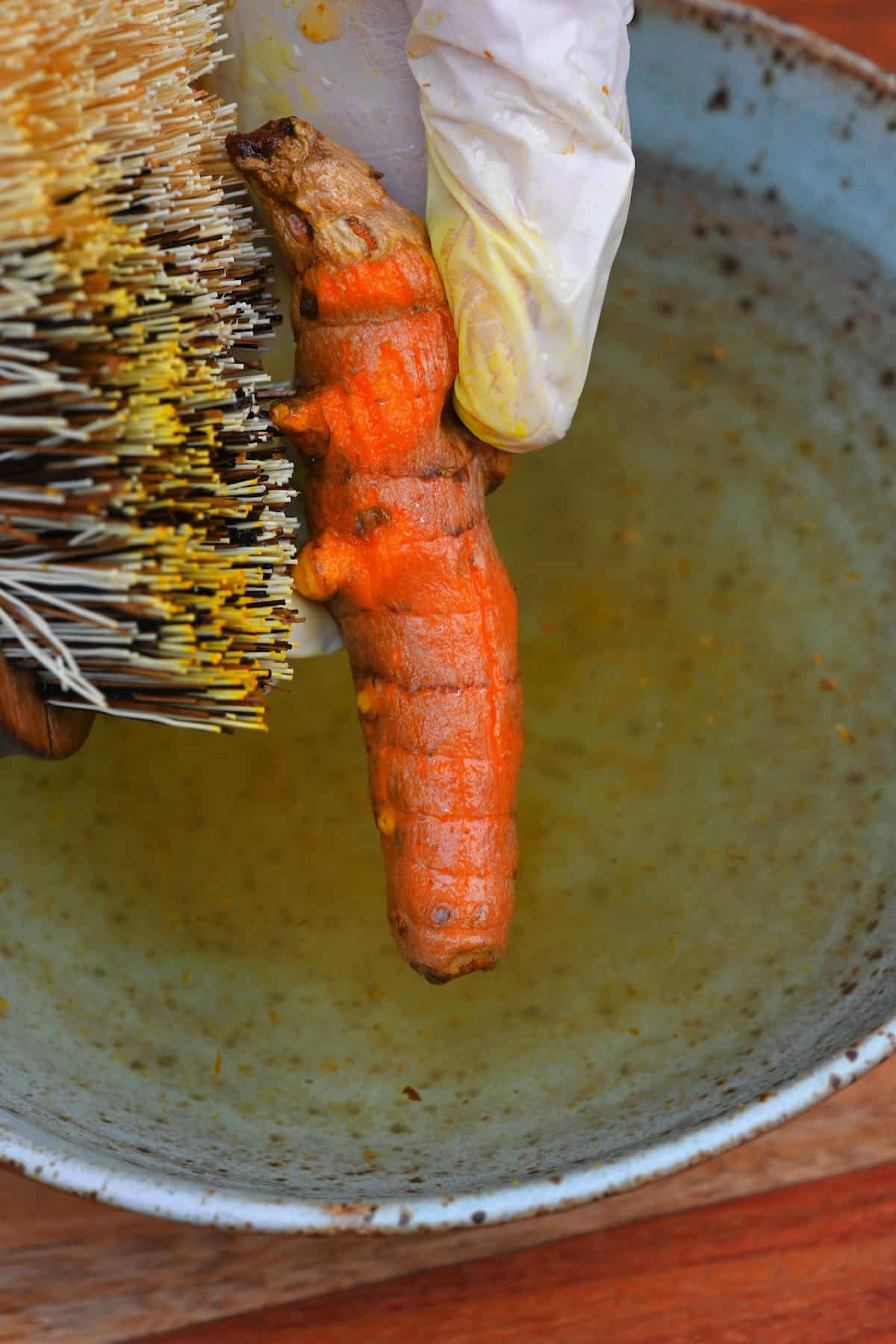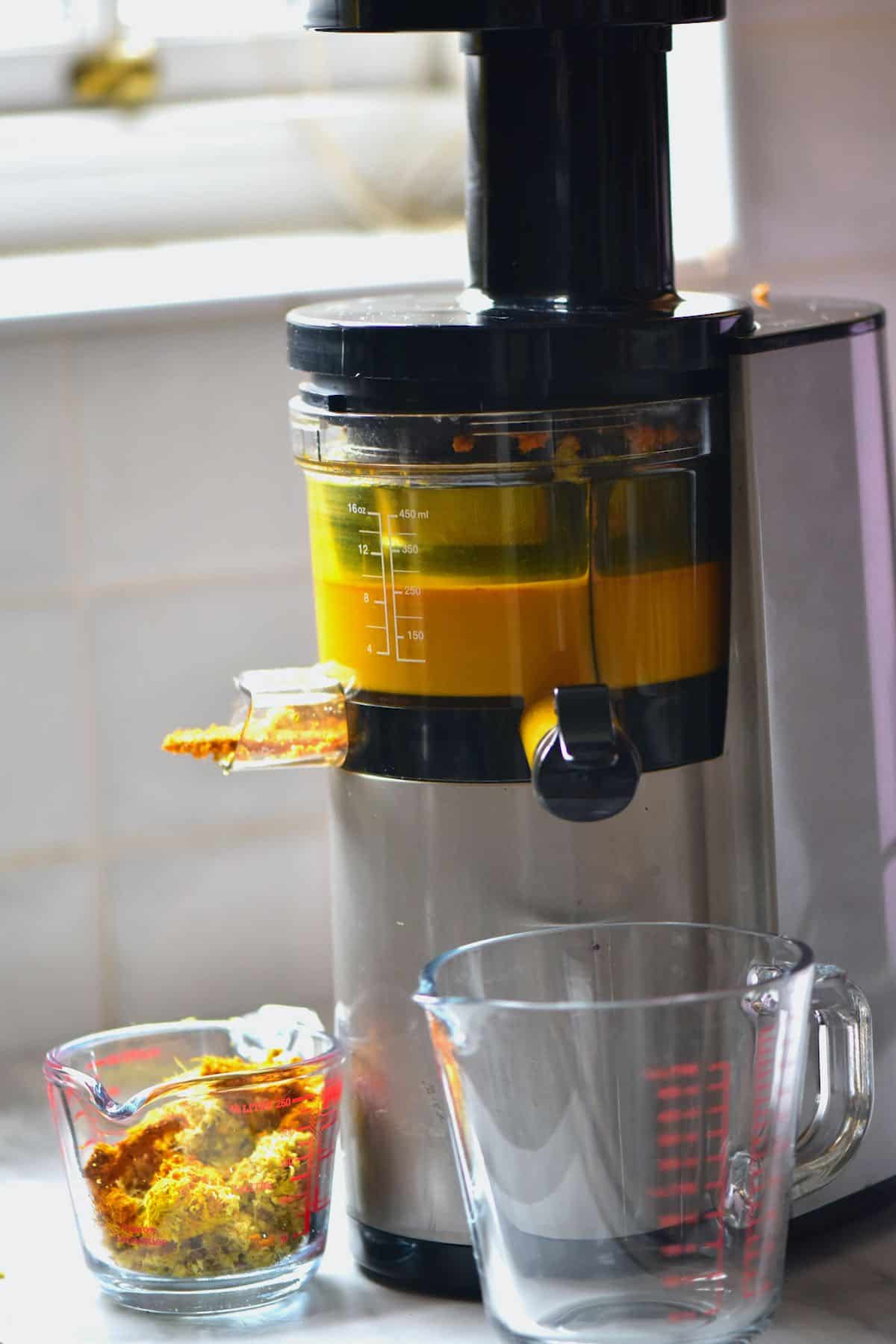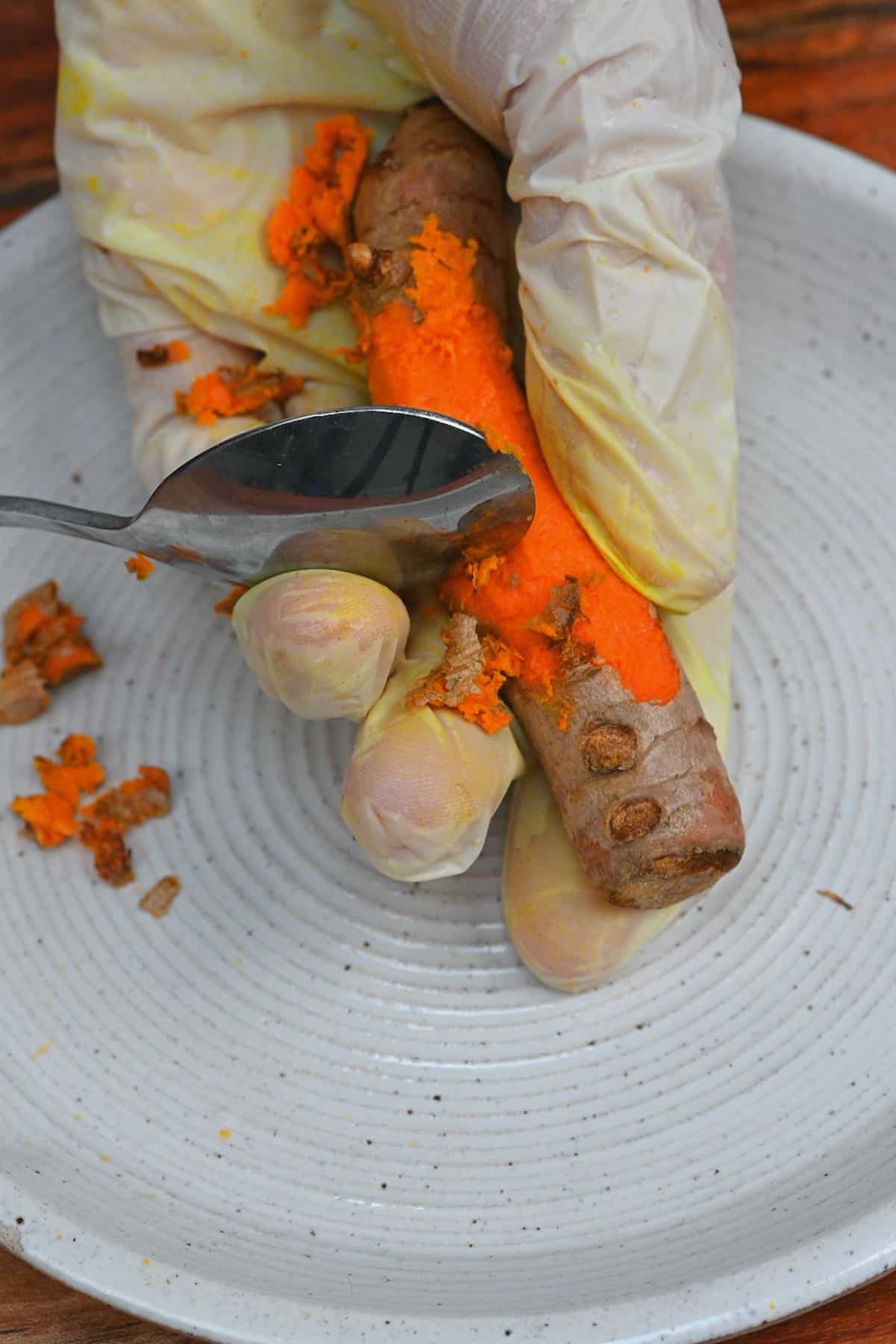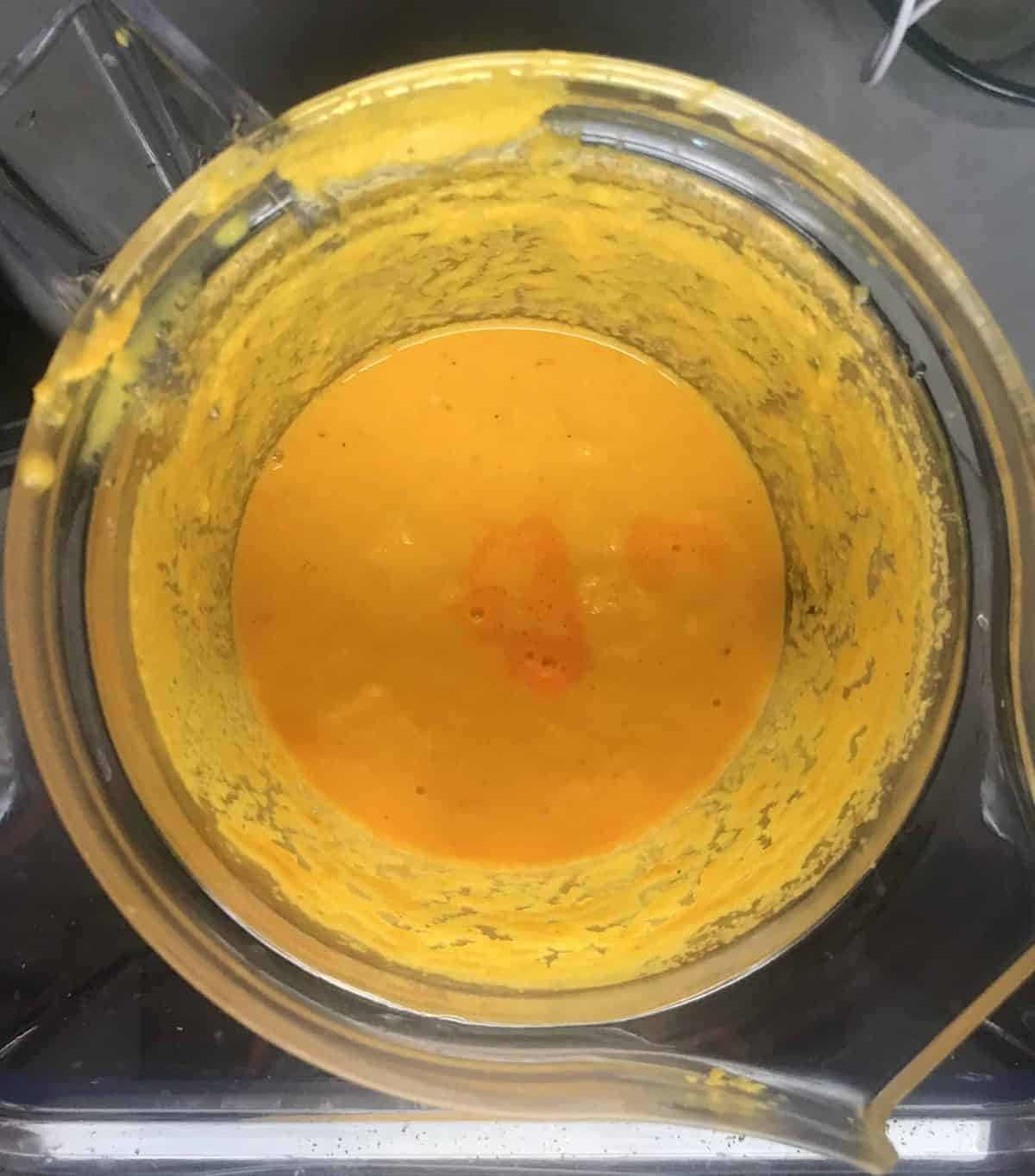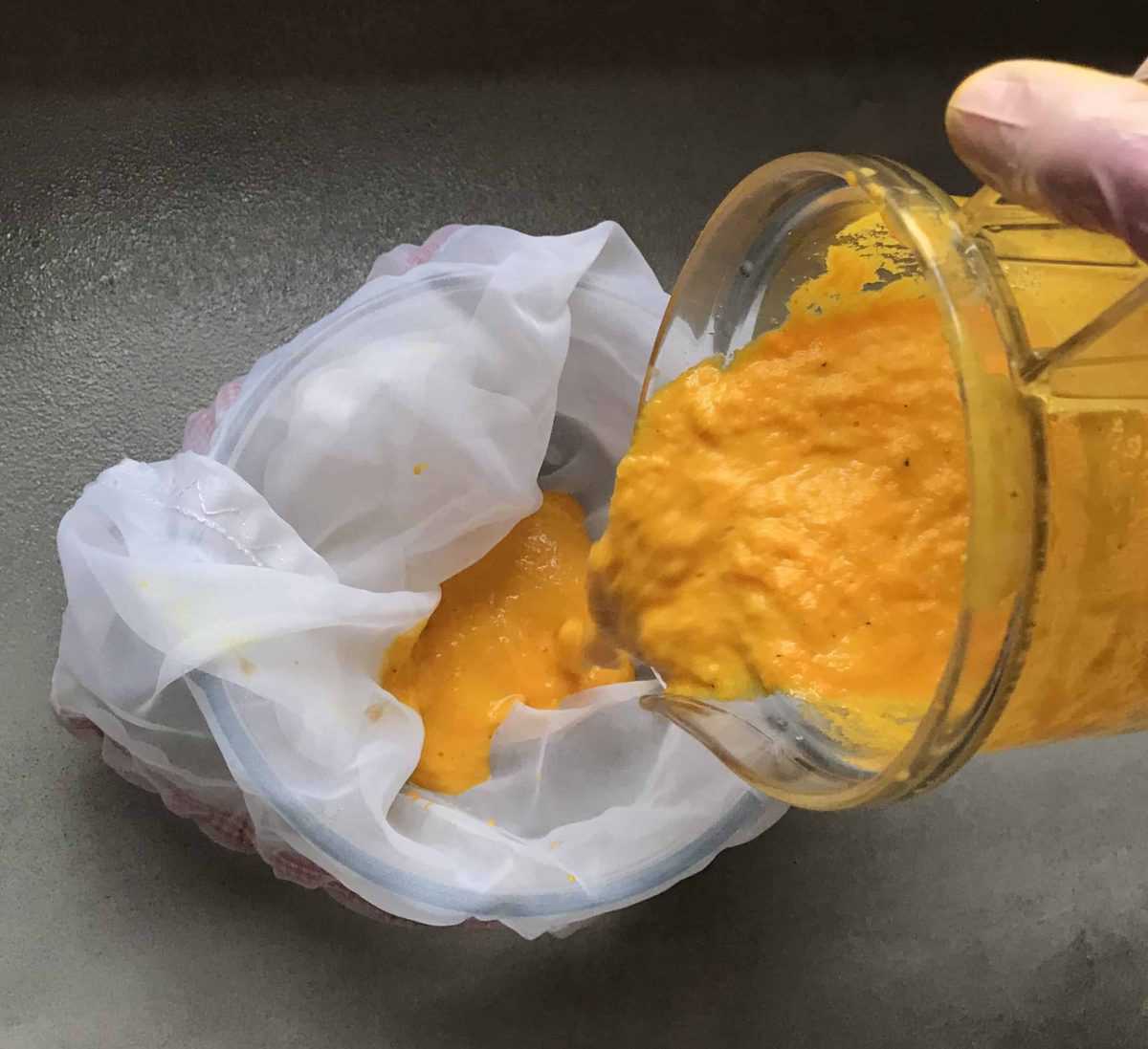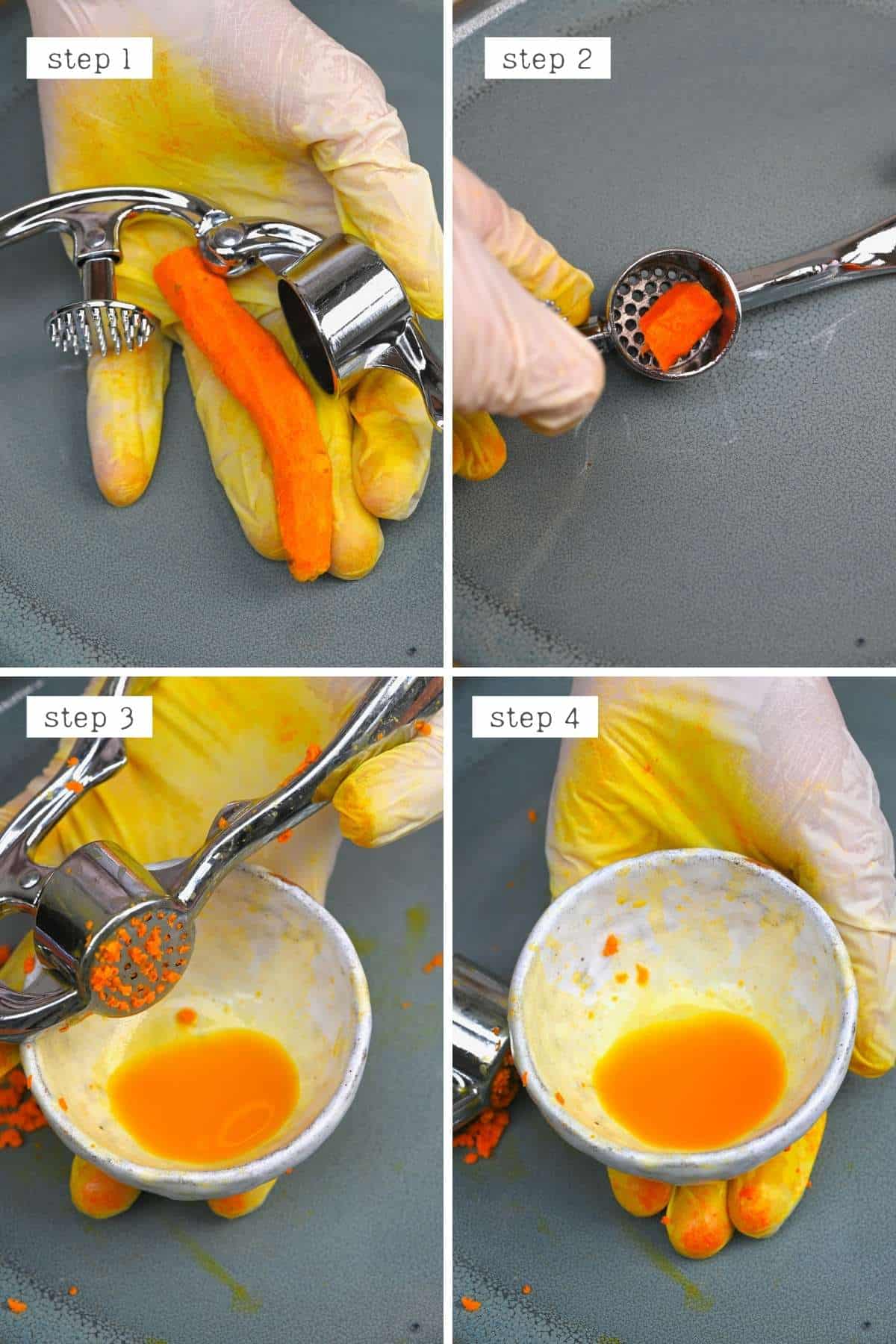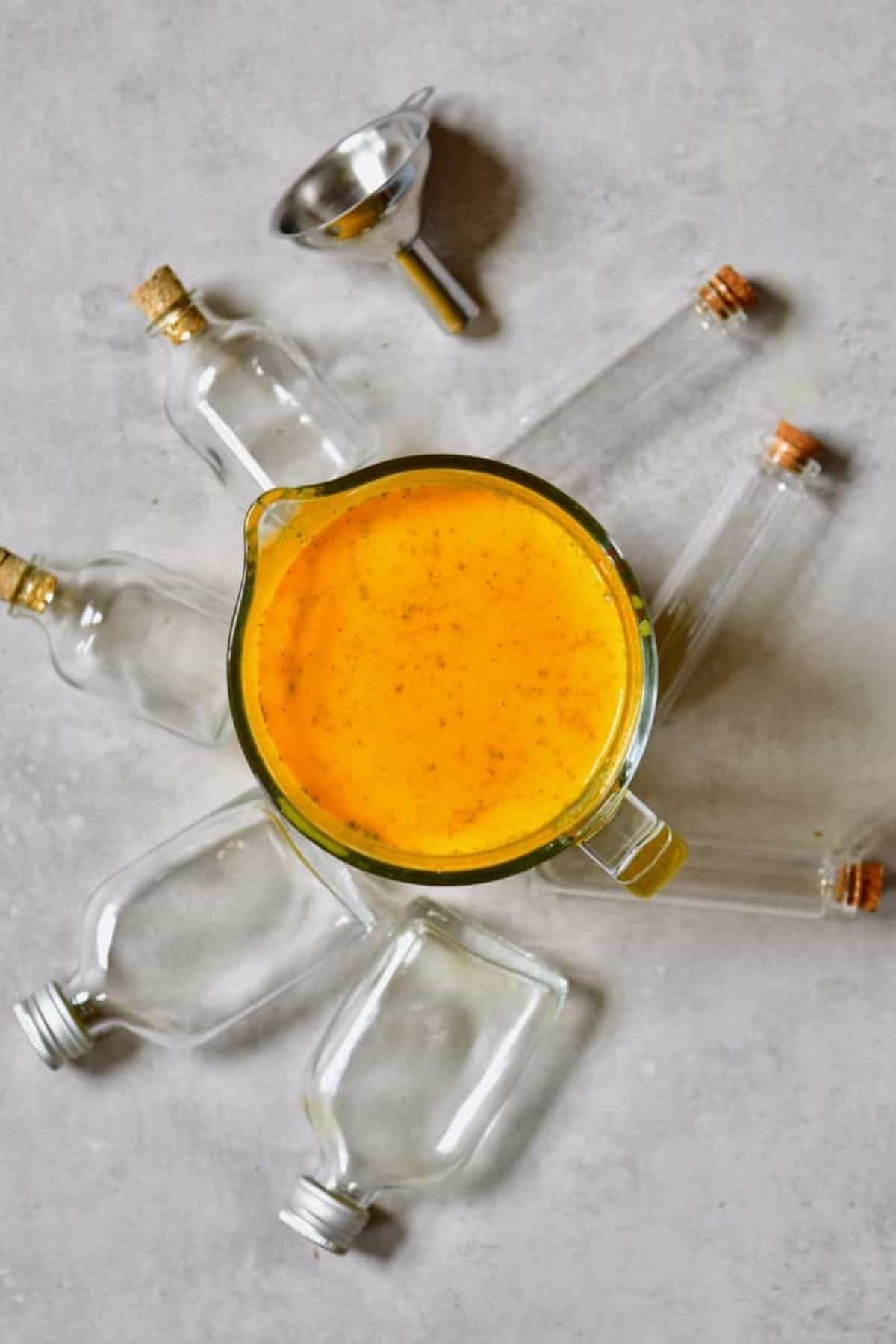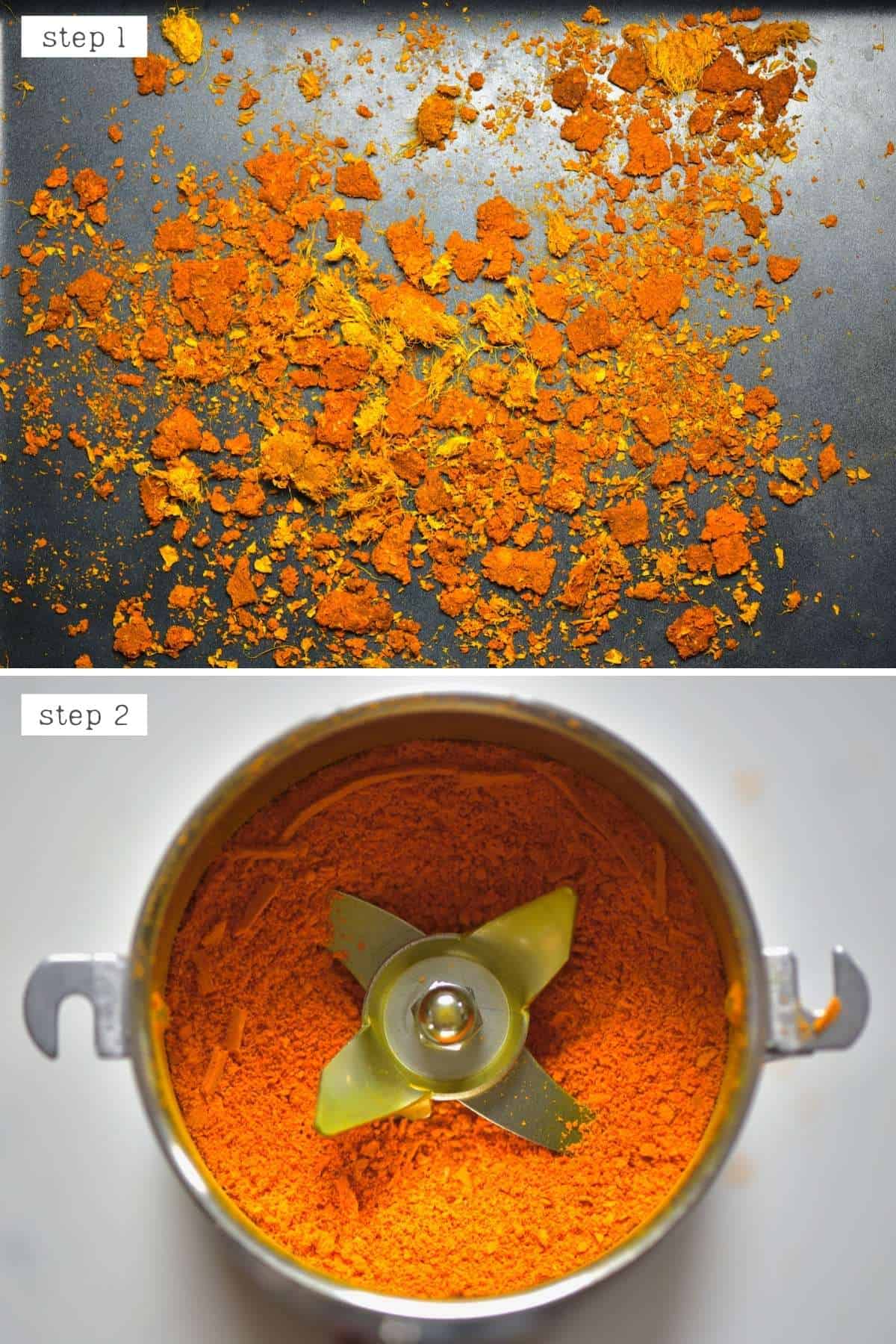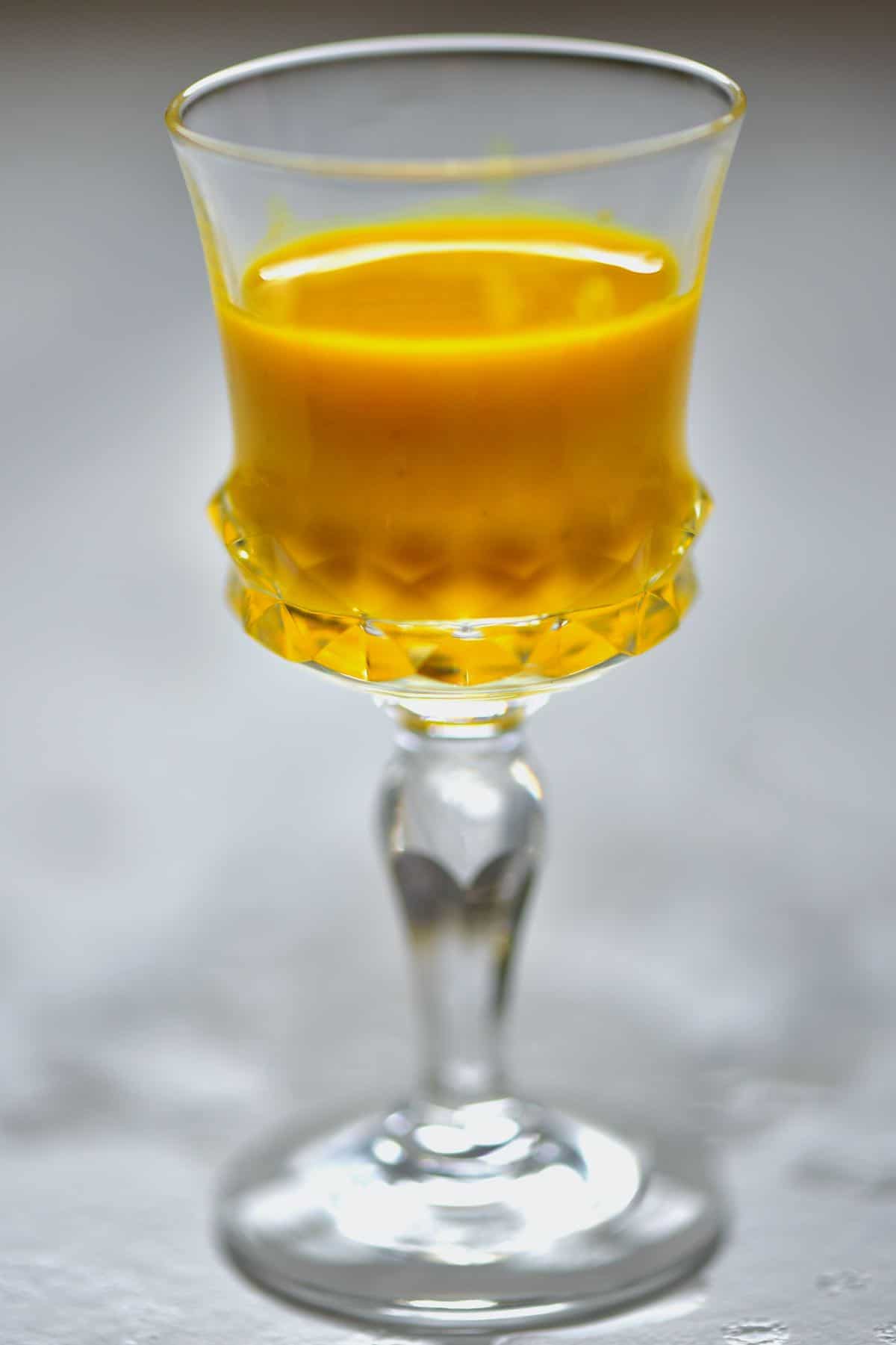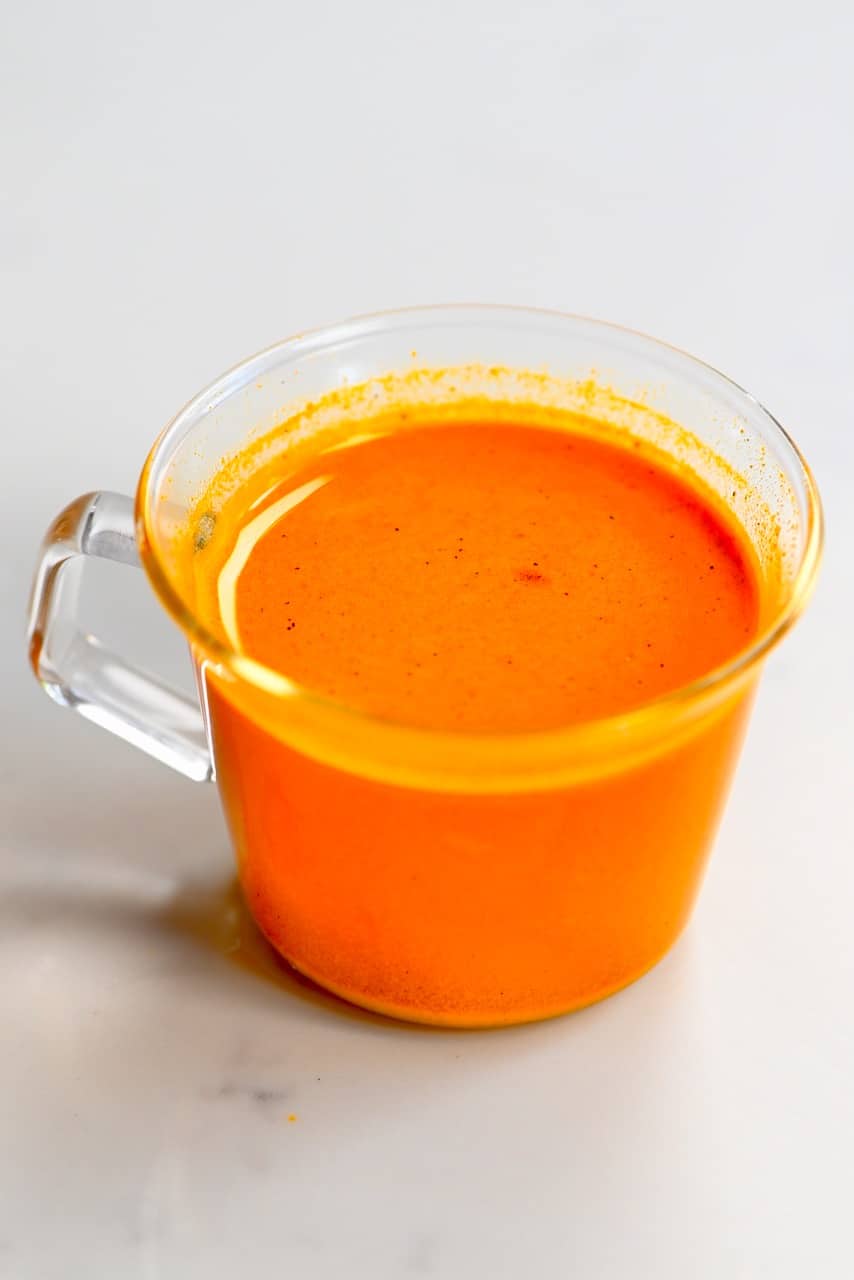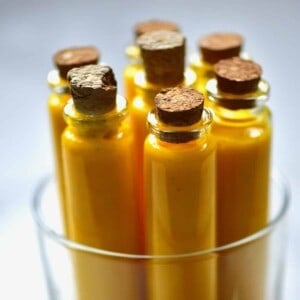It’s no secret that I’m relatively obsessed with turmeric, its magical compound ‘curcumin’, and its plethora of health benefits. I’ve already shared methods for Ginger Turmeric Immune-Boosting Shots. Yet, I’ve never shared the absolute basics – how to get turmeric juice! Turmeric juice is packed with health benefits and can create wellness ginger shots and mixed juices fit for a king (or queen). Plus, there’s no need to throw away the leftover pulp either! Turmeric has been used in Indian cuisine for thousands of years, and yet it’s only recently that science has begun to back up the health claims for this ingredient.
Turmeric juice benefits
What about turmeric makes it so special? It’s actually a compound found within the turmeric called ‘curcumin.’ However, the actual percentage of it found within turmeric when used as a seasoning wouldn’t be enough to truly take advantage. That’s why recipes such as turmeric shots and juice blends can be a great way to up the amount you consume and really take advantage! This definitely wouldn’t be the first time I’ve shared the amazing health benefits of turmeric juice, of which there are MANY. Best of all, most of them have been found through studies rather than just ‘random claims’ made online.
Here are a few of the top turmeric juice benefits
Increases the antioxidant capacity on our bodies – more than just providing antioxidants (which it also does), curcumin also stimulates our body’s own antioxidant enzymes. Anti-inflammatory properties – this is something many foods boast. However, turmeric does so impressively. Some studies have actually found that turmeric can work as well as, if not better than certain pharmaceuticals, and all with no side effects! Pain relief – once again, this is an impressive claim and has been found to be as effective, if not more than, in comparison to Ibuprofen and Tylenol (particularly when studying with those who suffer from Osteoarthritis). Anti-cancer properties – I know that anti-cancerous can be said about lots of foods, but turmeric actually physically stunts the growth of cancerous cells and tumors.’ Shows incredible potential as an anti-depressant – in fact, a study comparing it with Prozac found that curcumin came out on top, with some evidence showing that it may boost the brain’s neurotransmitters serotonin and dopamine, which both regulate mood.
There have also been studies showing how it may benefit heart and brain health and regulate blood pressure. More so, some evidence (though more is needed) shows that it could help improve hay fever symptoms, help modulate the immense system, protect bones and joints, combat DNA damage, and even improve and encourage healthy gut flora.
However, a word of caution!
The only caveat is that curcumin isn’t well absorbed into the bloodstream when consumed alone. Instead, any time you consume it, make sure to pair it with an ingredient that will improve curcumin absorption and make the most of the turmeric juice benefits. For example, fresh black pepper (which contains piperine) can enhance curcumin absorption by 2000%! Healthy fats (like coconut oil) can also bind to the curcumin and help it absorb.
How to juice turmeric
With A Juicer
This method is the simplest and quickest, with the highest juice yield and lowest ‘waste’. First, wash the fresh turmeric well using a small vegetable brush. There’s no need to peel the skin from the turmeric (unless you’re worried about pesticides), so I like to make sure that it’s properly clean. Then, feed the turmeric root into the juicer, cutting it into smaller pieces as needed to fit into your juicer’s shute. Top Tip: If you find that the turmeric pulp is still very wet, you can actually feed it back through the juicer a second (and even third) time.
With A Blender
The main difference with this method is that you’ll need to add extra water to help the blender (high-speed blenders only!) create a juice – so the liquid is slightly diluted. You also won’t be able to extract quite as much from the turmeric root. Top Tip: Use a smaller jug for this, as it will make it easier for the blade to blend the root properly. For this, you can use un-peeled turmeric, though peeled may be easier to blend. The easiest way to peel turmeric root is with a spoon (like I have here for ginger), which will easily scrape it off. Chop the turmeric into small pieces around 1-inch in length/thickness and add to the blender with 1/2-1 cup of water and blend until the pieces are broken up, and you have a smooth-ish juice. You could also use coconut water or blend it with another juice (like orange juice or carrot juice) if you want to use it immediately for mixed juice shots. Then, pour the turmeric juice into a nut milk bag (or use a cheesecloth or sieve) and squeeze the pulp to extract as much juice as possible. The juice will stain the nut milk bag/cheesecloth – so I usually keep one aside specifically for turmeric.
With A Garlic Press
This process can be affected by the turmeric’s age and the individual press – larger ones may work better- so it isn’t foolproof, but it should work in a pinch. First, peel the turmeric root and then slice it into pieces about 1-inch in size (or just big enough to fit your garlic press. Then simply press and the juice should come out without pushing through any of the pulp.
With A Garlic/Ginger Grater Dish
The final process only requires a garlic grater dish or micro planer/Japanese ginger grater and some patience. It will yield the most diluted juice – but it could be handy for those with no other option. Use gloves when using this method! You can use peeled or unpeeled turmeric for this method. First, grate the turmeric using the garlic grater. You can then attempt to add the pulp to a nut milk bag and squeeze out as much juice as possible. Alternatively, add the pulp to some water. Leave this to ‘soak’ in the refrigerator for at least six hours or overnight. Then strain the liquid through a nut milk bag/cheesecloth/strainer, pressing the pulp to extract as much juice as possible.
How to store
Fridge: Fresh juice is best consumed as soon as possible as the nutrients will deplete as it oxidizes. For that reason, it’s best to use the turmeric juice within 5-7 days, though it should be ‘fresh’ for up to 2 weeks. Give it a good shake before drinking. Freezer: Pour the turmeric juice into an ice-cube tray for perfectly portioned amounts and freeze for up to 6 months. When you want to use some, remove it from the freezer and allow it to thaw for juice shots or blend directly into smoothies from frozen.
How do you use turmeric pulp?
There are several ways you can utilize the leftover turmeric pulp.
Freeze the pulp: it can then be added to soups, smoothies, tea, etc. You could even add a little of the juice with the pulp. Dry the pulp: lay it out on a tray and air-dry or use a dehumidifier and dry it out. Once dry, you can grind it into a blender or electric coffee/spice grinder until it’s powdered. It can then be added to baked goods and dishes for fiber, flavor, and added nutrition. To make turmeric tea: this is traditionally made with turmeric paste; however, you could also use turmeric pulp – just use a little extra. You can also use it in various recipes, such as crackers, muffins, or bread.
How Much turmeric juice should you have per day?
Apparently, you can safely consume up to 12,000mg of curcumin, but that’s definitely not something I’d recommend. Instead, several studies used amounts between 500-2000mg per day (though they usually use extracts with a higher curcumin amount). Apparently, there is about 200mg of curcumin per 1tsp turmeric powder (3g). In general, when converting dried to fresh, you use 3x the amount – so 9g of fresh root per 200mg. Furthermore, 2-inches of root equals around 1 Tbsp dried powder (9g powder so around 600mg curcumin).
Who should avoid turmeric juice?
While turmeric is packed with health benefits, In some cases, it should be avoided. This includes those who have: gallbladder issues, kidney stones, iron deficiency, and diabetes (as it can cause blood sugar levels to drop too low). It can also interact with certain medications. In general, I recommend you speak to your doctor if you are at all unsure.
When is best to drink turmeric juice?
If you’re consuming as part of a shot, I usually suggest doing so in the morning on an empty stomach. However, you can add this juice to juice blends and smoothies at any time of the day. If you experience any heartburn when drinking the juice on an empty stomach, consume it with food.
What juicer is best for juicing turmeric?
There are two main types of juicers: masticating and centrifugal. When it comes to turmeric, masticating (cold-press) will do a better job at extracting as much liquid as possible from the root.
Do you need to peel turmeric to juice it?
This is really down to personal preference. If you’re worried about pesticides, then you can. But most of the time (and with most methods), it’s definitely not necessary.
TOP TIPS
TURMERIC WILL STAIN kitchen tools, wooden spoons, cutting boards, and skin! It’s best to use gloves when handling it and washing everything immediately after using. Once cleaned, place the items in a sunny window for 5-6 hours, and the turmeric stains fade away. Remember curcumin needs to be taken alongside black pepper and/or fat (such as coconut oil, butter, etc.) to benefit. One study showed that just a pinch of black pepper served with turmeric increases the bio-availability by 2000%! So definitely not something to ignore. It’s best to use whole black pepper as the active element in the pepper oxidizes when exposed to light and air. Thus, it degrades over time. Be careful where you source your fresh turmeric: there have been studies showing high lead content within turmeric sourced from India. To avoid this, it’s best to source the turmeric root from farmers’ markets and grocery stores locally. You can also ask vendors to provide you with a ‘certificate of analysis,’ which will include the amount of lead in the turmeric (anything under 3ppm is considered safe).
Other turmeric DIYs & recipes
Golden Turmeric Energy Balls (No-bake) DIY Turmeric Tincture – Nature’s Golden Medicine Simple Turmeric Honey Paste (+ Uses) How to make Turmeric powder at home Ginger Turmeric Immune-Boosting Energy Shots (juicer recipe) How to Remove Turmeric Stains (From Counters, Kitchen Gadgets, Clothes, etc.)
There are several other recipes here on the blog that include turmeric, so please check them out! If you make turmeric juice, then let me know your thoughts and questions in the comments. I’d also really appreciate a recipe rating and would love to see your turmeric shots – just tag @AlphaFoodie.

